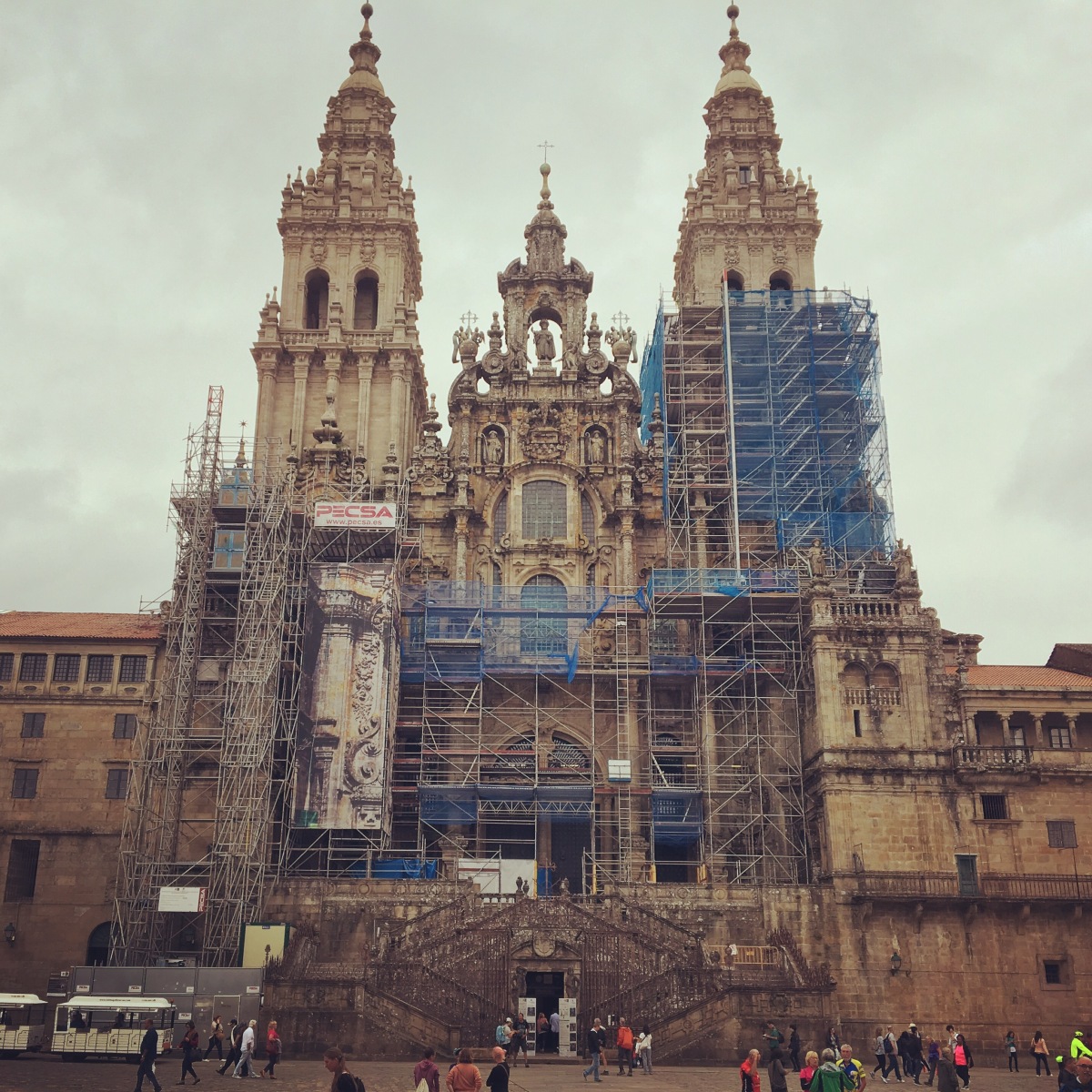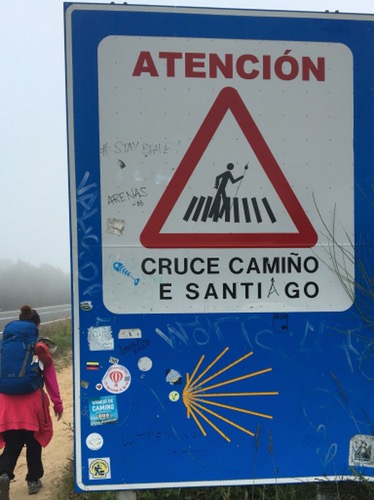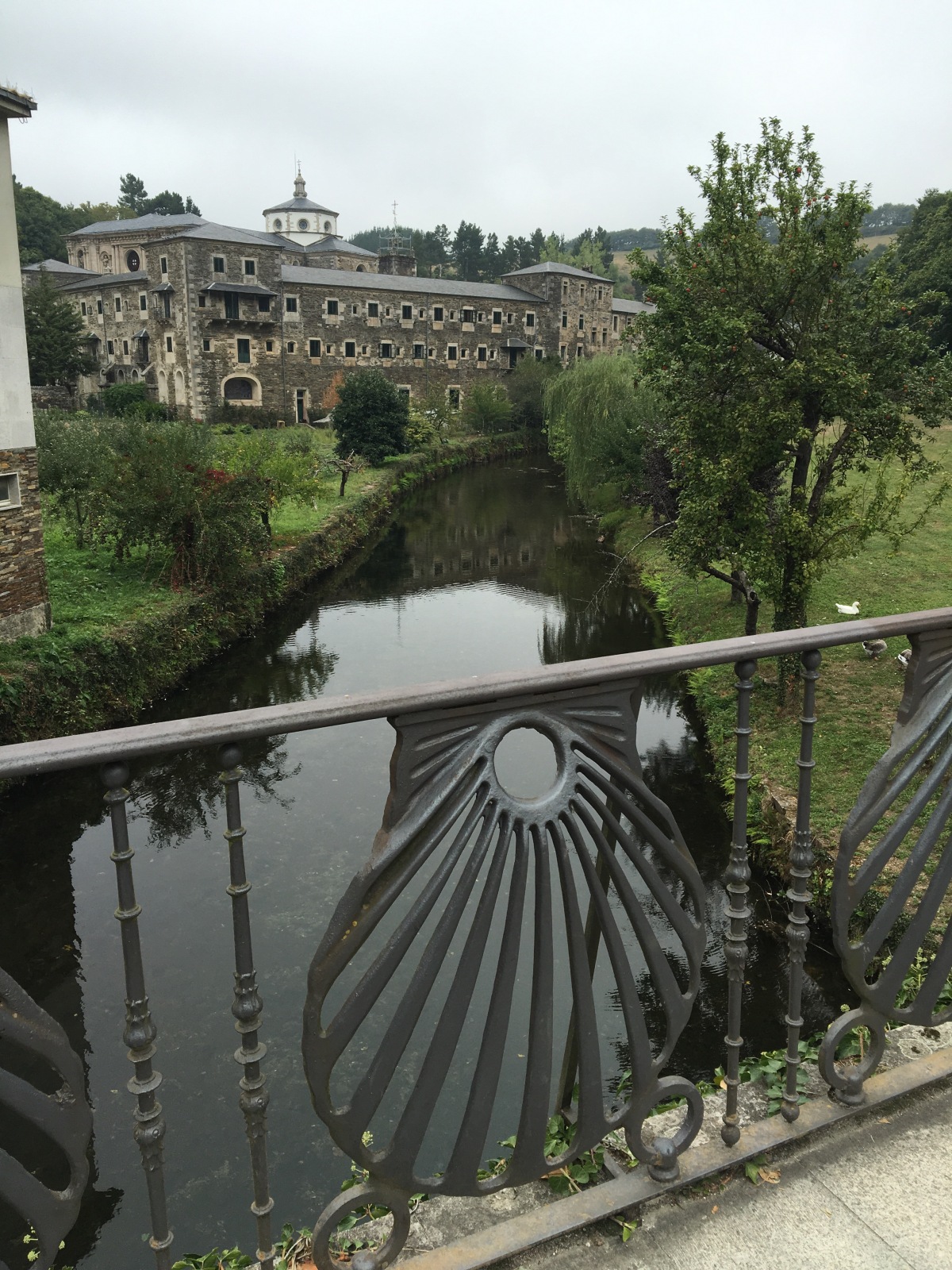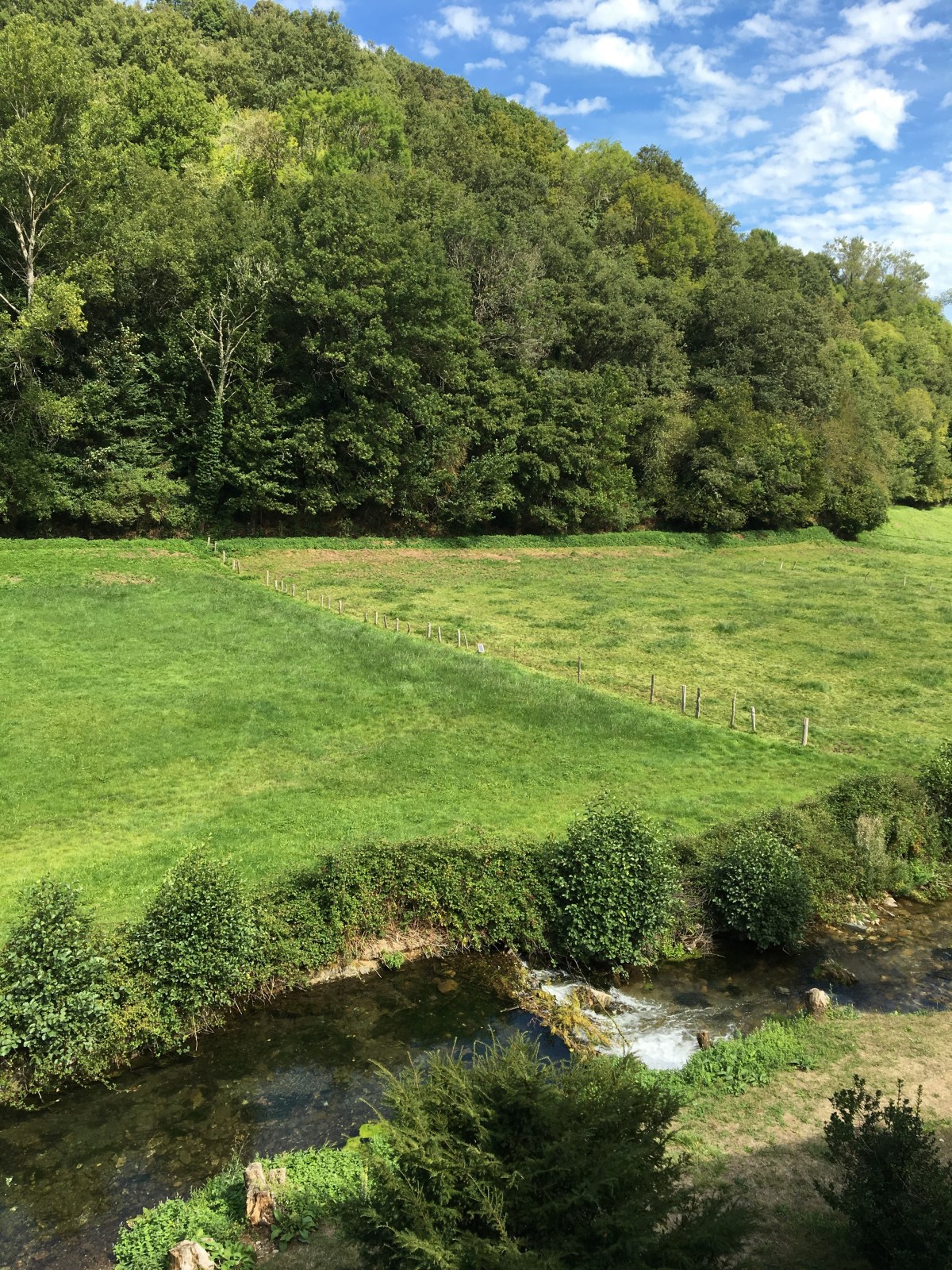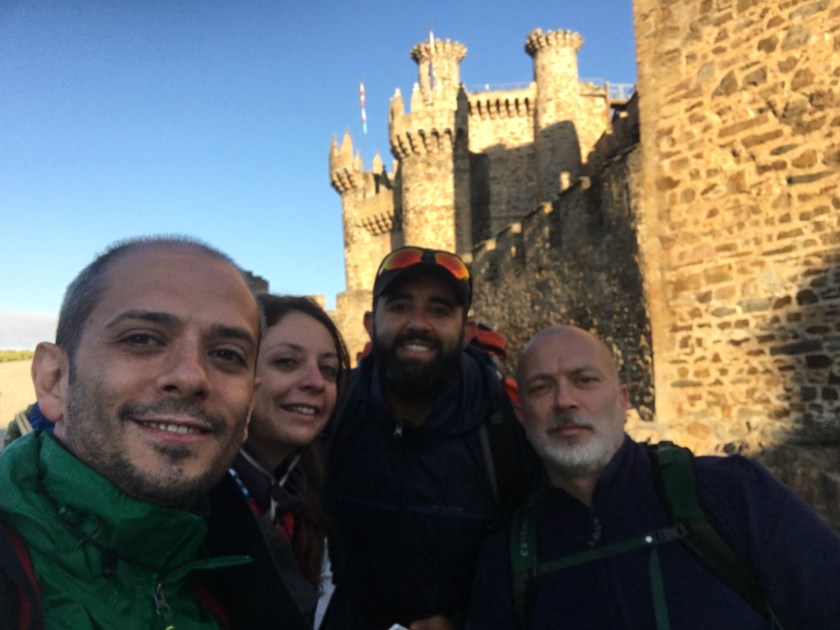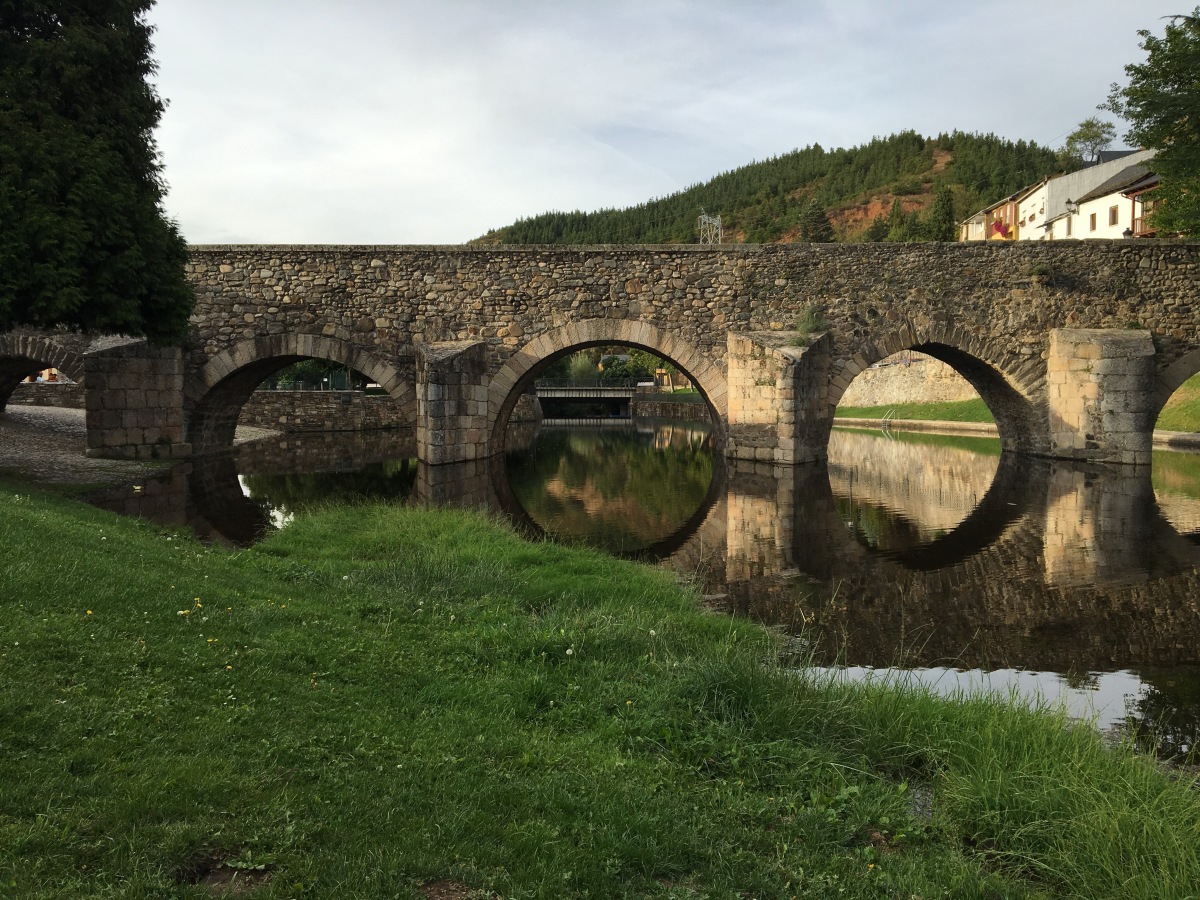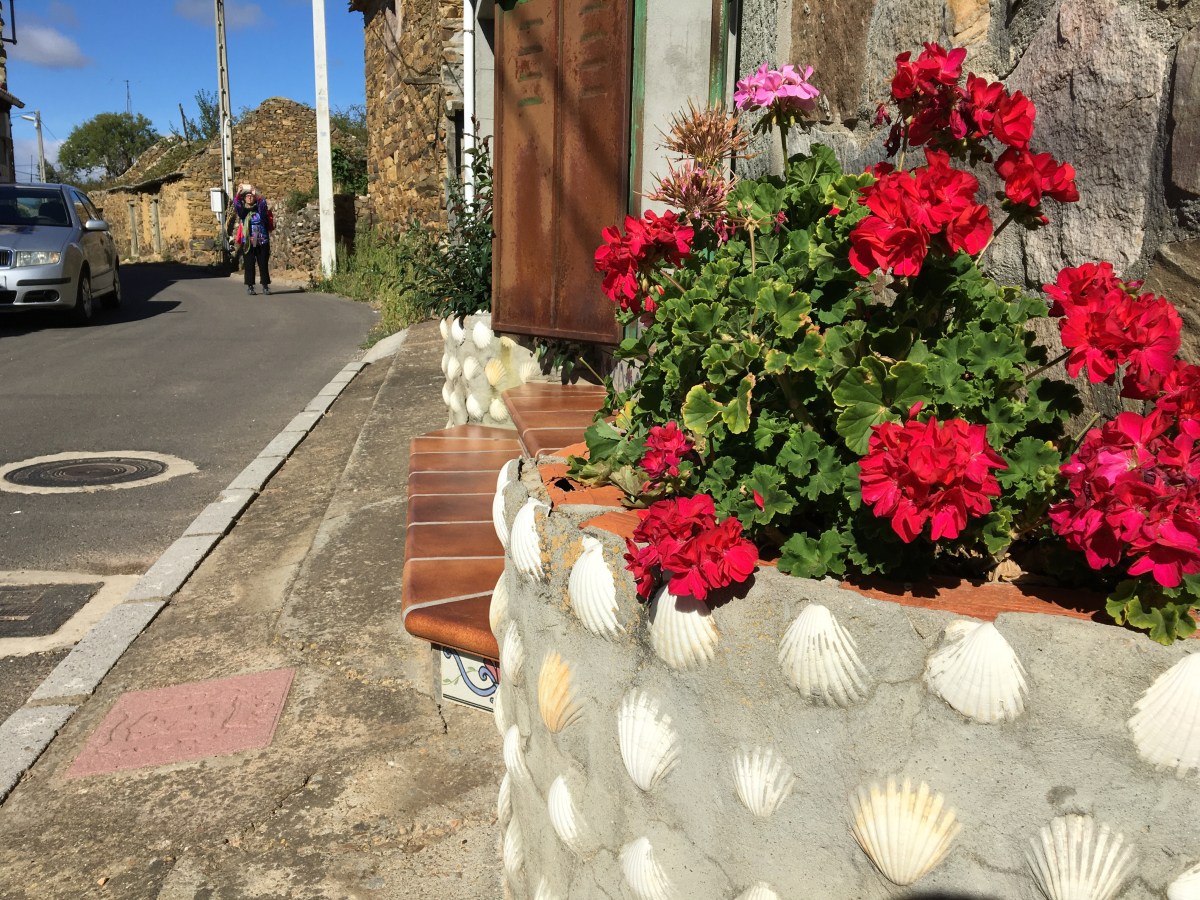13 giorni di cammino senza sosta, 24km al giorno completati oggi di fronte alla maestosa facciata della cattedrale di Santiago, un’ emozione indiescrivibile arrivati nella piazza della cattedrale, senza parole, soltanto tante emozioni che possono essere esternate in lacrime di gioia, di felicitá e fierezza di aver raggiunto un traguardo che inizialmente sembrava impossibile. 310km di cammino da Leon a Santiago, tra pianure sotto il sole cocente, salite interminabili tra i boschi delle montagne di Leon per raggiungere O Cebreiro, paesaggi incontaminati abbracciati dalla nebbia mattutina e boschi incantati. Le mucche, le galline, i cavalli, la puzza di sterco che dopo un po di giorni non è piu puzza ma profumo di natura vera. La brina del mattino, il vento che ti sbatte in faccia, la pioggia che ti rende difficile il cammino, lo zaino che diventa sempre piu pesante kilometro dopo kimolmetro, le meravigliose persone che ci hanno accolto, consigliato, che ci hanno accompagnato che hanno condiviso con noi questo viaggio-esperienza unico al mondo. La natura, l’ anima che abbiamo riscoperto, la bellezza di ció che ci circonda, il cibo tipico e il vino di casa, l’architettura medievale, le case rurali, le chiesette di campagna e le stalle. I sentieri, i ruscelli, i fiumi, le montagne , valli e precipizi, la menta selvatica il rosmarino e i fiori di mille colori. I sentieri di terra battuta, di pietra, i percorsi lungo l’asfalto, tra i campi e le pitaggioni di mais. 310km di poesia, 310km che purtroppo sono finiti anche se non ci dispiace sapere di non dovere camminare ancora per ore e di non doversi svegliare prima dell’ alba domani mattina. 310km di vita, di riflessioni, di leggerezza, di risate felici, di sole e di luce di vita che speriamo porti novità positive una volta tornati a casa, nella realtà di tutti i giorni. Il cammino di Santiago è l’Esperienza della vita con la E maiuscola. Preparate lo zaino e partite ovunque voi siate…Y ahora fiesta 🙂
A 13-day walk without stops, 24km a day completed today in front of the majestic facade of the cathedral of Santiago the Compostela, an unbelievable emotion once arrived in the cathedral square; no words to describe it, just a lot of emotions that can be expressed in tears of joy, of happiness and pride in having reached a goal that seemed impossible initially. 310km walk from Leon to Santiago, between plains under the scorching sun, endless climbs through forests on the mountains of Leon to reach O Cebreiro, dream landscapes embraced by the morning fog and enchanted forests along the way. Cows, hens, horses, donkeys and dung stench whose smell after some days is no longer an issue, though the scent of nature. The frost in the morning, the wind that slaps you in the face, the rain that makes walking even more difficult, the backpack that becomes heavier kilometer after kilometer, the wonderful people who welcomed us, recommended us, who accompanied us who shared with us this unique experience. The nature, the soul that we rediscovered, the beauty that surrounds us, the typical food and the house wine, the medieval architecture, the rural homes, country churches and stables. The trails, streams, rivers, mountains, valleys and precipices, wild mint and rosemary, the flowers in many colors. The dirt paths, stone paths along the asphalt, between the fields and the green and yellow corn fields. 310km of poetry, which, unfortunately, we regret are over although we are pleased to know not to have to walk for hours and not having to wake up before dawn tomorrow morning. 310km of life, of reflections, of lightness, of happy laughter, sunshine and light of life that we hope will bring positive changes once back home, in every day life. The Camino de Santiago is the experience of life. Prepare your backpack wherever you are and go … Y ahora fiesta 🙂

